- Details
- Written by Gordon Prentice
This morning we learn that 46 people have died in Toronto this year as a result of gun violence. 
It is a shocking statistic. And it's getting closer to home.
Last month two men were injured in a shooting at 7.25pm on a Friday night on the Town’s Main Street South, yards away from Newmarket’s triumphal arch which welcomes people to the historic downtown.
Although the Government talks endlessly about assault weapons they are not the main problem. (Photo: the Danforth shooter, killing people)
"The majority of gun related homicides involve a handgun"
The new Public Safety Minister, Marco Mendecino, who took over from the woefully ineffectual Bill Blair, told the House of Commons Public Safety Committee on 16 December 2021.
“It is a fact that the majority of gun-related homicides involve a handgun, and that's why our government is committed to investing one billion dollars to support those provinces and territories that want to ban handguns.”
The minority Liberal Government elected last September (on 32.6% of the national vote) pledged in its Platform to:
“Set aside a minimum of $1 billion to support provinces or territories who implement a ban on handguns across their jurisdiction, to keep our cities and communities safe.”
The mandate letter sent by the Prime Minister to Mendecino on 16 December 2021 asks him to deliver on this commitment by:
“Providing financial support to provinces and territories that implement a ban on handguns across their jurisdiction”
Reintroducing Bill C21
There is no mention of reintroducing Bill C21 which sought to tighten up the law on firearms. The Bill was lost when Trudeau called the Federal Election for 20 September 2021 and Parliament was dissolved.
Had it become law Bill C21 would have required licensed handgun owners to comply with rules, set by the municipality where they live, for the storage and transportation of their handguns or risk losing their licence. The Commissioner of Firearms would maintain a publicly available list of municipalities “in which such requirements and prohibitions apply”.
However, the Liberal Platform changed at the last election. Instead of allowing cities and municipalities to decide whether to ban handguns (an absurd proposition in itself) the power is to be vested in the Provinces and Territories. Now the initial absurdity is compounded. Toronto has repeatedly called for a handgun ban. But the Province under Doug Ford’s Progressive Conservatives has ruled that out. 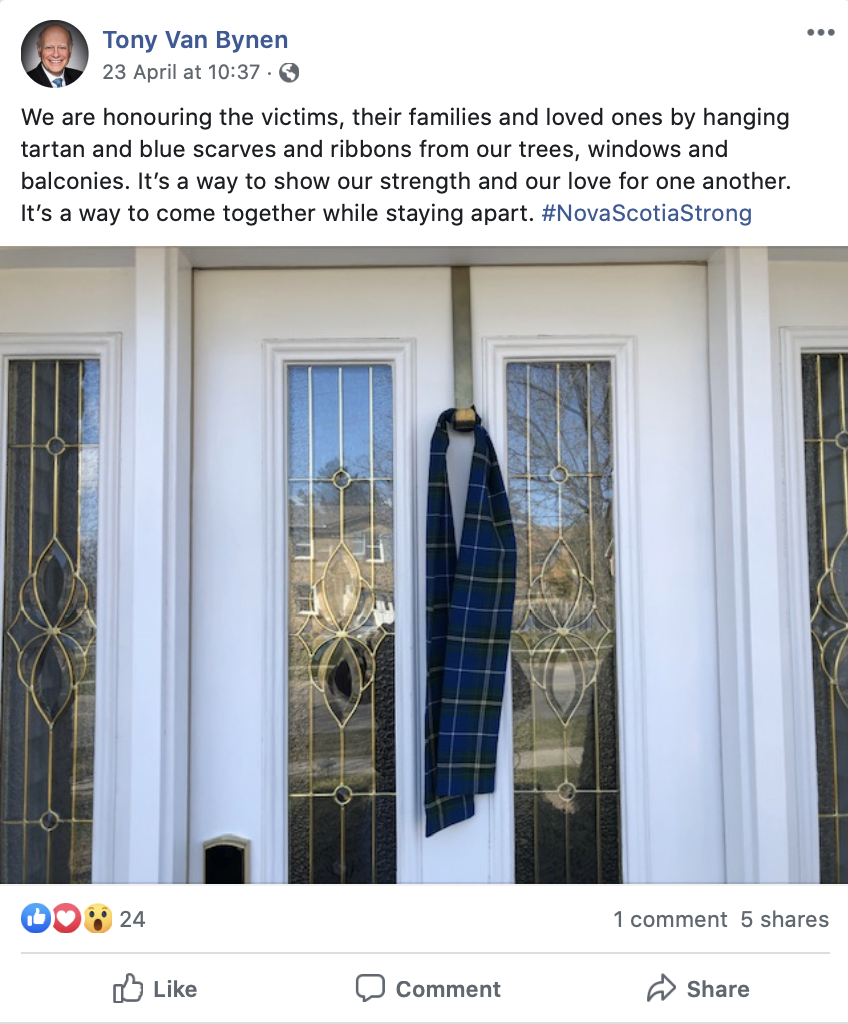
So, what should be done?
The absence of any reference to new legislation on handguns in the Prime Minister’s mandate letter to Marco Medecino suggests it may be possible to introduce new requirements for licence holders by administrative action – once the Provinces have passed the necessary legislation. But what form that Provincial legislation should take is a bit of a mystery – at least to me.
Ryan Tumilty writing in the National Post on 24 November 2021 says:
“In the last Parliament, the Liberals introduced, but did not pass, a sweeping gun bill that included measures limiting the capacity of rifle magazines, banning certain weapons and allowing municipalities to ban handguns within their jurisdiction. The bill died with the election in August and the Liberals will have to reintroduce the legislation in this Parliament.
A provincial ban could operate differently because provinces have more constitutional authorities and might not need federal legislation to ban handguns. But the Liberals could also pass federal legislation alongside provincial rules that would prevent people in those provinces from getting a licence for a handgun.”
Let's get on with it
If Federal legislation is required (and I assume it is) then let’s get on with it.
Even if what is being proposed is half-baked, it is better than nothing. The numbers are there to get a Bill through Parliament and on to the Statute Book.
The NDP backed the original proposal to allow municipalities to ban handguns and even claimed the idea as their own. They are unlikely to stand in the way of Trudeau's new, reworked commitment which gives Provinces the final say in deciding handgun policy within their own jurisdictions.
After the tragedy of Portapique, we could see one of more of the Atlantic Provinces effectively banning handguns while here in Ontario - so long as Ford is running the show – there will be no change to the status quo.
Patchwork of rules
We could see a patchwork quilt of rules across Canada when, instead, there should be uniformity across the country. The Mayors of Newmarket and Aurora, John Taylor and Tom Mrakas, believe the opt-in, opt-out policy is impractical.
Newmarket-Aurora’s Liberal MP, Tony Van Bynen, disagrees.
The MP talks about gun violence in his latest flyer (December 2021):
“This starts with tackling the rise of gun violence in our biggest cities. Our communities should be safe and peaceful places to live and raise children, but gun crimes are increasing. In May 2020, we took action to put a ban on the use, sale or import of assault style weapons most often used in mass shootings.
“While this was a strong initiative, we know there is still more to do. This is why we are going to implement a mandatory buyback of all assault style weapons and work with the provinces and territories that want to ban handguns.”
This is the man who draped a tartan scarf on his front door for 48 hours in memory of those slain in Nova Scotia – Canada’s worst mass murder – and posted the photo on his Facebook page so we could see his grief.
A more fitting tribute would be for Van Bynen to make it a personal priority to help deliver a handgun ban – even one as incomplete and as flawed as the one being championed by the Prime Minister.
This email address is being protected from spambots. You need JavaScript enabled to view it.
See more here on the debate on handguns
- Details
- Written by Gordon Prentice
My good friend Peter Pike died on 27 December after being unwell for some time. He was 84. 
Peter was the Labour MP for Burnley, an industrial town in Lancashire in the North West of England, from 1983 until 2005 when he retired from the House of Commons - but not from politics.
Peter’s maiden speech on 28 June 1983 marked him out as a man of principle, ready and willing to defend the interests of Burnley to the last.
I first got to know Peter in 1991 when I was selected to fight Pendle, next door to his Burnley constituency. I looked on him then as a kind of big brother - the long-established and worldly-wise MP and me the new kid on the block.
I kept in touch with Peter over the years and last heard from him in October in the wake of the terrible news of the murder of David Amess.
Genuine
Peter was a genuine person with no side to him. He got on well with people and I never once heard him unfairly criticise anyone.
Peter was a Labour stalwart to the core. He believed Britain needed a strong, united Labour Party. He told me he was never the greatest Tony Blair fan but it was always a pity that Gordon Brown and Tony Blair did not work better together. He said Brown's obsession with wanting to be Leader was his weakness.
Peter was incredibly industrious. His constituency casework was a top priority and the day-to-day experience of helping people resolve the problems they had with the State and its agencies informed his politics.
I recall him standing up in the Commons, often slightly dishevelled, holding forth on the scourge of low pay or on the problems facing manufacturing or local transport or whatever the issue was. If a policy affected Burnley you could count on him to be on his feet, defending the town and its people.
Peter remained politically active when he left the Commons, chairing the local constituency Party until 2015 when he said he wanted to hand over to a younger person with more energy.
Westminster bustle
He liked the bustle of Westminster but the place changed when Covid struck. He told me:
“Parliament is very strange now as it is almost empty - it would not be my cup of tea at all. That said I still miss it!”
I have many vivid memories of Peter.
In 2003 he led a CPA (Commonwealth Parliamentary Association) delegation to St Vincent and the Grenadines in the Caribbean. I was on it. (Photo: saying hello to the children at an elementary school in Kingstown, SVG)
On our itinerary was a visit to the central prison that must have dated back to Napoleonic times. The walls were six feet thick. We were being taken up to see the tiny cells for the condemned men (though no-one had been executed there for years). To get there we had to ascend a steep flight of stone steps with no bannisters. Down below on our right was an open exercise area crammed full of bare-chested prisoners, gazing up at us.
Address the prisoners!
The uniformed Prison Governor with his swagger stick led the way followed by Peter, the delegation leader. I was next in line with the other MPs in single file behind. Half way up the stairs the Governor swivelled round and barked out at the top of his voice:
“Mr Pike, Sir!!! Would you care to address the prisoners!”
None of us had been given any warning that this was on the programme. I looked at Peter - thanking God I was not in his position - and he handled it with tremendous skill. There was a moment when I could see his mind racing as he surveyed the ranks of prisoners below and then he settled into his theme. He too yelled at the top of his voice:
"The conditions here are terrible!”
He tells them the prison is cramped, overcrowded and totally out of date. He vows to take up the issue as a priority when we get back to London.
And he does.
Peter was a good friend to me and to many others. I shall always remember him with great affection.
Peter Pike 26 June 1937 – 27 December 2021
This email address is being protected from spambots. You need JavaScript enabled to view it.
- Details
- Written by Gordon Prentice
On 3 February 1916 a fire engulfed the Centre Block of the Parliament buildings in Ottawa, reducing most of it to a smouldering ruin. 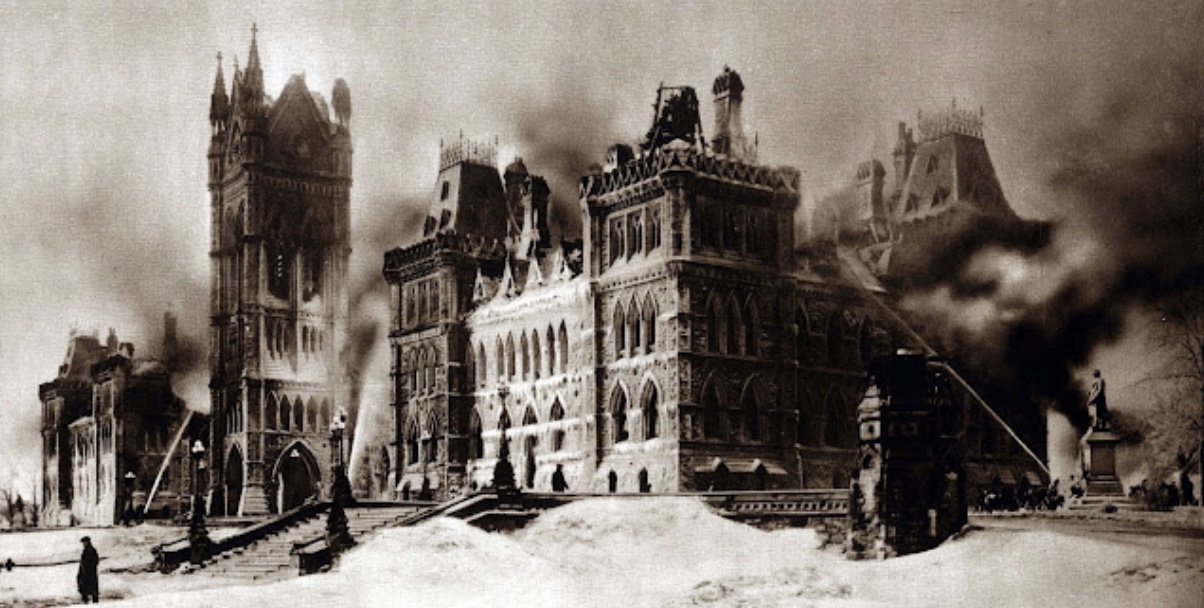
The fire started in the Members’ Reading Room next to the octagonal library which was saved when the quick-thinking librarian, Michael MacCormac, ordered the iron doors to be closed, sealing it off from the raging inferno.
It is thought the fire was started when a cigar was carelessly dropped into a waste-paper basket despite the fact that the Reading Room was ostensibly a “no smoking” area. The rule was widely ignored by MPs. (Photo right)
The room was panelled in old pine with many layers of varnish. It contained books, magazines and newspapers from floor to ceiling. No surprise then that the fire quickly took hold and spread at an alarming speed.
Very little was saved other than some valuable art pieces removed from the Senate. A Royal Commission reported on the causes of the fire and its aftermath.
Smell the history
As it happens, I have a very large and heavy bound volume of the Globe newspaper for April-June 1882, whose pages are charred and scorched at the edges. The rest of the volume is quite readable and is in remarkably good condition. I picked it up on my travels and I am told it came from a house in Burlington. (Photo below right)
Each title page of the Globe has a small sticker attached. Most say: 10314 Parliamentary Library. But some other numbers also appear. (Click "Read More" at the bottom to see images)
Astonishingly, it is still possible to get a faint whiff of the smoke from the pages. I can actually smell the fire when I turn them.
Records lost 
I have asked the Library of Parliament if similar volumes survived the fire.
They say the records of the Library’s newspaper collection prior to 1916 were presumably lost in the fire. They have not been able to find a detailed list of all the losses to the Library and Reading Room collections. (The Library was affected by water.) And they haven't seen anything like my bound volume with its tagged "Parliamentary Library" pages.
So, with flames licking round their feet and ankles, why on earth would a fleeing MP - or someone else unknown - want to remove a smouldering bound volume of the Globe newspaper?
William Mulock gets elected
No-one can ever know. But perhaps we have a clue. The fifth Federal Election took place in 1882 (with the Conservatives winning 139 seats (53.4%) to the Liberals (71 (46.6%) on a 70.3% turnout). The bound volume contains a valuable (though, obviously, not unique) record of the ups and downs of the election campaign, the rallies and the rivalries. In the language of the time it paints vivid pictures of the candidates with all their strengths and weaknesses.
In 1882 Newmarket’s famous son, William Mulock, ran for Parliament in North York as a Liberal and won. 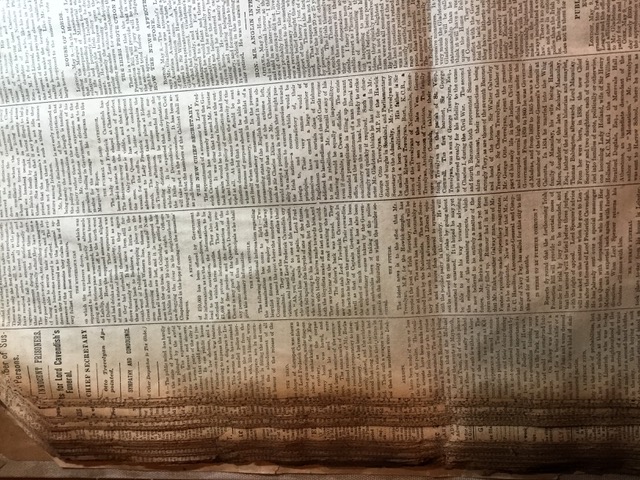
The first public meeting of the campaign was held on 2 June in Queensville when Mulock addressed a huge crowd from the balcony of the Bennett Hotel for an hour and a quarter!
“Mr Mulock came forward amid deafening applause which prevents his commencing to speak for some moments… with the exception of a few interruptions from a knot of Tory clacquers on the edge of the crowd he was given a fair hearing.”
His opponent, James Anderson, was not so lucky:
“Mr Anderson, the Government candidate, followed and for a portion of the time allotted him talked in the most erratic and pointless fashion, awakening the pity of his opponents if not the commiseration of his friends.”
Rough old trade
Politics was a rough old trade in those days. Heckling at political meetings was commonplace. Fighting too often broke out. And the reporting of events was merciless and blunt. In the run-up to the election, the Globe’s Parliamentary reporter had the nerve to tell his readers in his opening sentence:
“The proceedings in the House of Commons were very uninteresting yesterday.”
Votes for (some) men
Of course, women didn’t have the vote then. But neither did lots of men.
The franchise was incredibly restrictive. 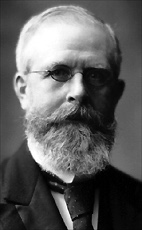
“Male persons of 21 years or over, British subjects by birth or naturalisation who own or are tenants of property valued at $400 in cities; $300 in towns and $200 in villages.”
There was also the “income franchise” where the male voter had to have an income
“from some trade, office, calling or profession or not less than $400 per annum.”
There was even a special category of franchise for farmers’ sons.
“Every farmer’s son residing on the farm of his father and mother (if not less than 20 acres) for the twelve months preceding the return of the assessment roll is entitled to vote providing (1) that he is a British subject and (2) that his father’s property is assessed at a sufficient amount. ($200 is the qualification for each vote; if therefore the father’s property is assessed at $400 the father and son have the right to vote; if for $600 the father and two sons; if for $800 the father and three sons and so on.)
“If the father be dead and the mother the owner of the property, the son or sons have the right to vote as though their father were alive.”
With all these restrictions it is a miracle that voter turnout in the 5th Federal Election was 70.3%
Nowadays we don't have that excuse.
In September 2021 the turnout in Canada’s 44th Federal Election was 62.5%
This email address is being protected from spambots. You need JavaScript enabled to view it.
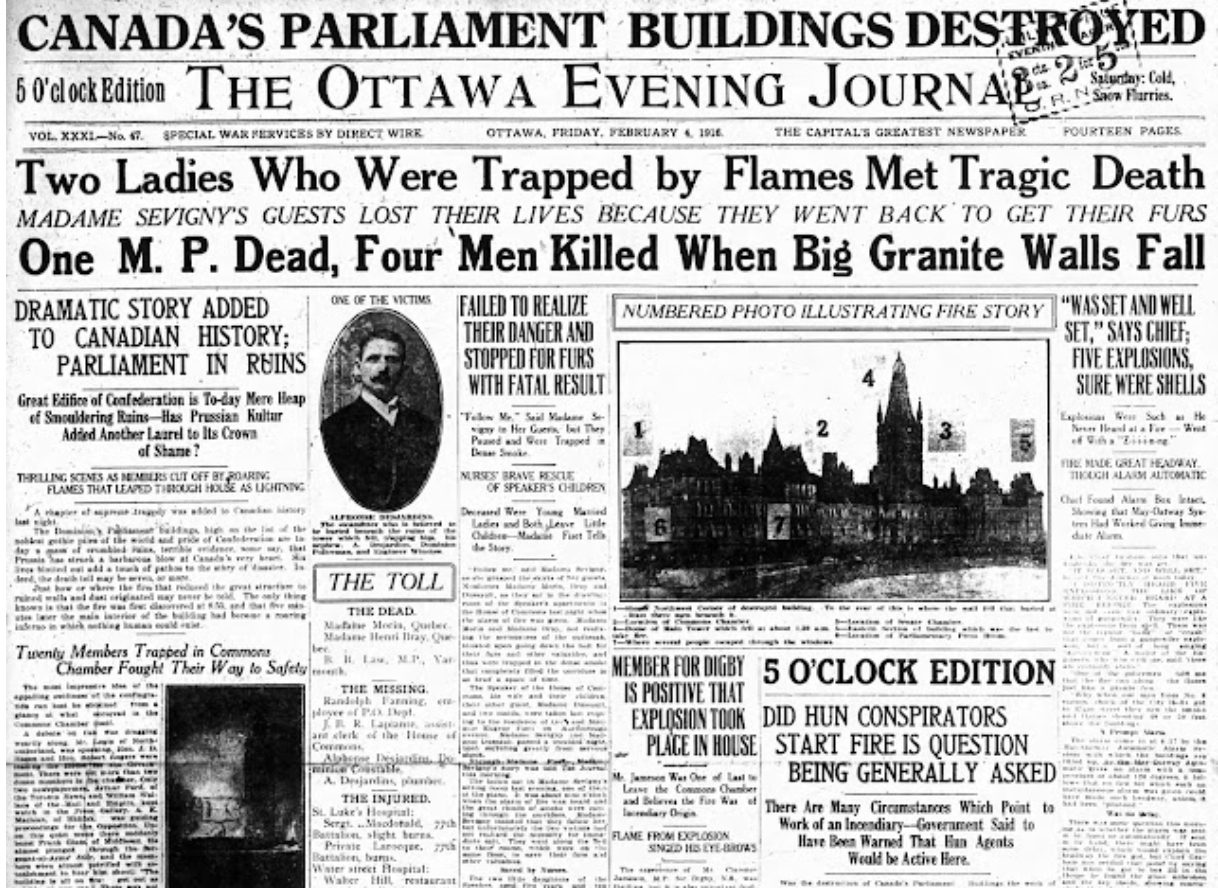
Click Read More for images.
Read more: The Fire in Parliament in 1916 and my smoky piece of history
- Details
- Written by Gordon Prentice
The Glenway developer, Marianneville, which donated 16 acres of land to the Town of Newmarket earlier this month can afford to show some largesse.
On 21 January 2010 Marianneville bought a little over 140 acres of land (57 hectares), then designated as private open space, from the owners of the old Glenway Golf Course for $9,900,000.
This works out at a very modest $70,287 per acre.
Rezoning unlocks value
Marianneville took a gamble that they could get the land rezoned for housing. And they did. They are now reaping rewards that are truly sensational. They can afford to gift to the Town the land they cannot use and do not need. And we shall soon see little plaques erected along the new public trails reminding us of their generosity.
Joanne Barnett, Vice President of the Kerbel Group and the brains behind the operation, is now re-cast as Lady Bountiful.
The sale of the golf course at Glenway to developers triggered similar sales elsewhere. Predatory developers, hungry for land in urban areas, targetted golf courses across the Province.
The development of the golf course at Highland Gate in Aurora soon followed.
Sitting on a gold mine
Rezoning land can unlock millions. And golf course owners soon realised they could be sitting on a gold-mine.
A golf course next to the proposed route of the controversial Bradford Bypass, owned by John Cho, the father of Ontario’s Associate Minister of Transportation, Stan Cho, could be worth a small fortune.
John Cho’s business partner Kenneth Yoo is quoted telling a Korean newspaper:
“It (the golf course) is currently tied to a Greenbelt but it can be transformed into a residential area. In that case, the value will rise beyond imagination.”
In 2008 the Town was given the opportunity to buy the Glenway land but didn't take up the offer.
This email address is being protected from spambots. You need JavaScript enabled to view it.
Newmarket Today says the 16 acres donated by Marianneville are estimated to be worth $14,000,000 - or $875,000 per acre. The Marianneville lands total 140 acres. If we believe Newmarket Today's estimate, the total Marianneville lands would be worth $875,000 x 140 = $122,500,000. Not a bad return for an outlay of under $10M in 2010.
See also: Glenway: What really happened (21/06/2015) and Glenway, the final act: What did we learn? (24/06/2015) And the Glenway West Lands: Giving back to the community (12/06/2017)
Update on 31 December 2021: From Newmarket Today: Glenway West and the Land Donation
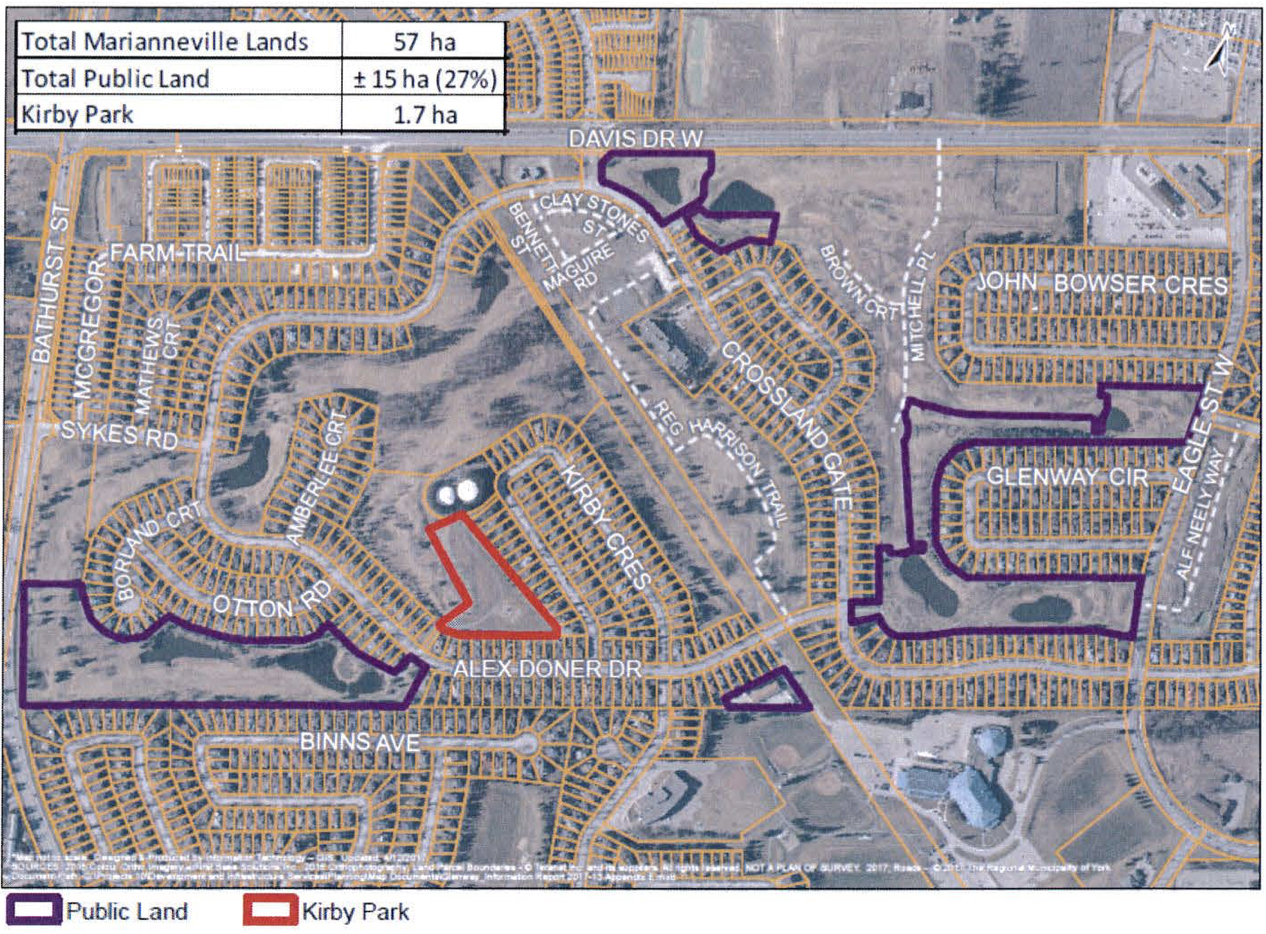
- Details
- Written by Gordon Prentice
I laughed out loud when I read that the Glenway developer, Marianneville, had donated 16 acres to the Town and this was estimated to be worth $14M. 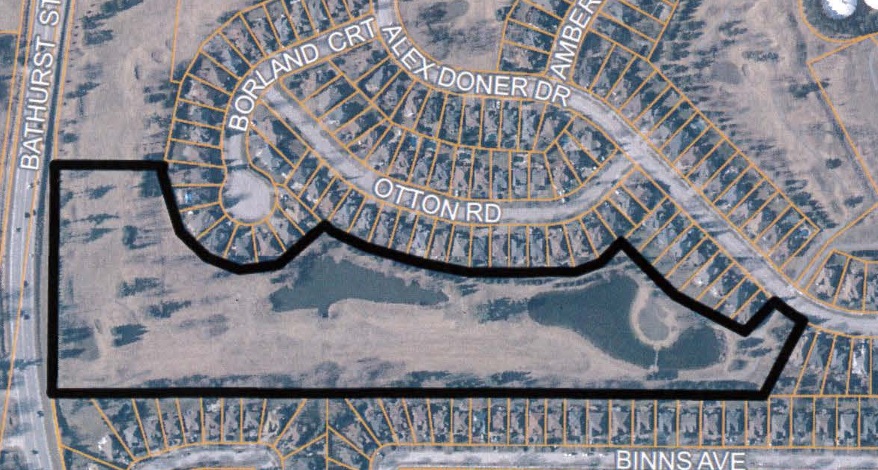
Talk about inflation in land prices!
Marianneville bought the lands that are now being developed for housing in Glenway together with the lands that have been gifted to the Town – for $9,900,000 on 21 January 2010 from the owners of the old Glenway Golf Course.
Not in the Golf business
The owners first offered to sell to the Town in 2008 but the then Chief Administrative Officer, Bob Shelton, advised councillors not to buy as the Council was not in the business of running a golf course.
True. But the Council is in the business of safeguarding and extending public open space – if, of course, the terms are right.
Back in 2008, the then Mayor, Tony Van Bynen, now MP for Newmarket-Aurora, agreed with Shelton and the offer was not taken up.
"Fantastic deal"
Former Newmarket councillor Dave Kerwin – at that time the longest serving councillor in Canada – said the buy was a "fantastic deal". This was an uncharacteristic understatement by Kerwin, known for his florid hyperbole.
Marianneville went to the OMB and got the golf course land re-designated for housing. It has made hundreds of millions in pure profit.
Glenway Golf Course dropped into their lap like a big, ripe, juicy plum.
And now they have gifted to the Town the stormwater ponds and land they otherwise can’t use.
Good for them!
This email address is being protected from spambots. You need JavaScript enabled to view it.
A Newmarket Media Release on 9 June 2017 told us: "Approximately 16 acres are included in the donation, bringing the total of public land ownership for parks, trails, open space and environmental protection to 27 per cent of Marianneville’s land holdings." However, we know that Marianneville owns 140 acres.

Page 82 of 286